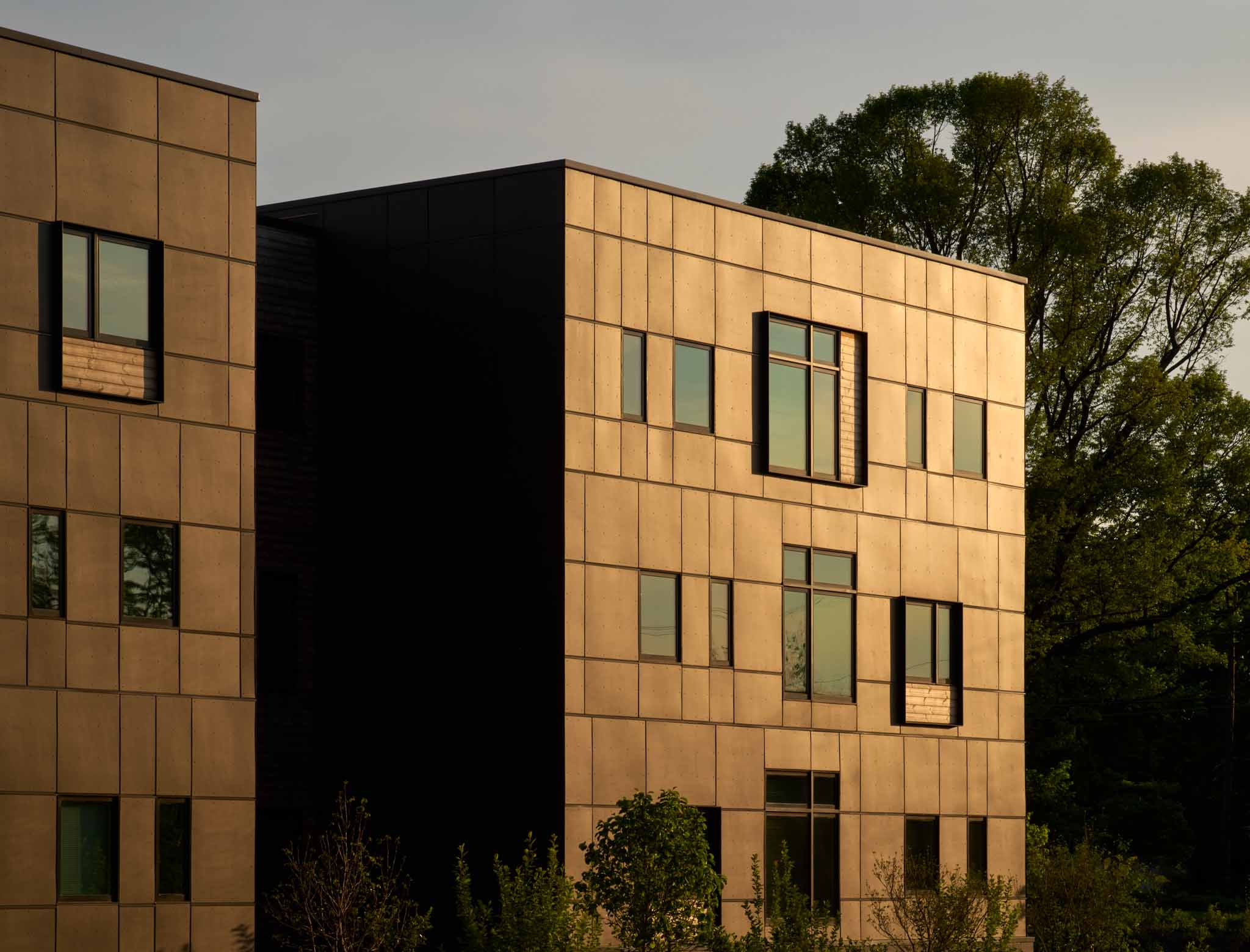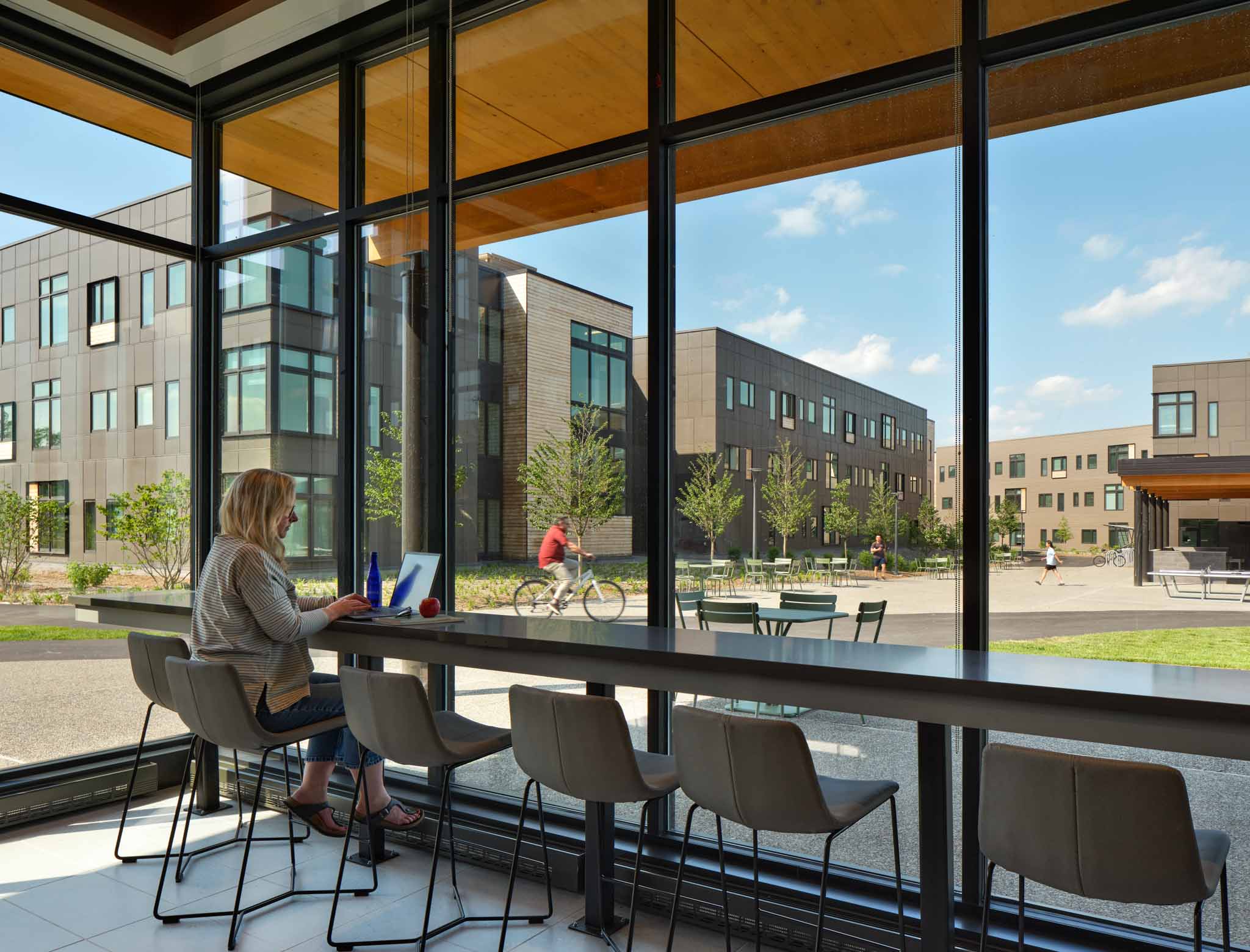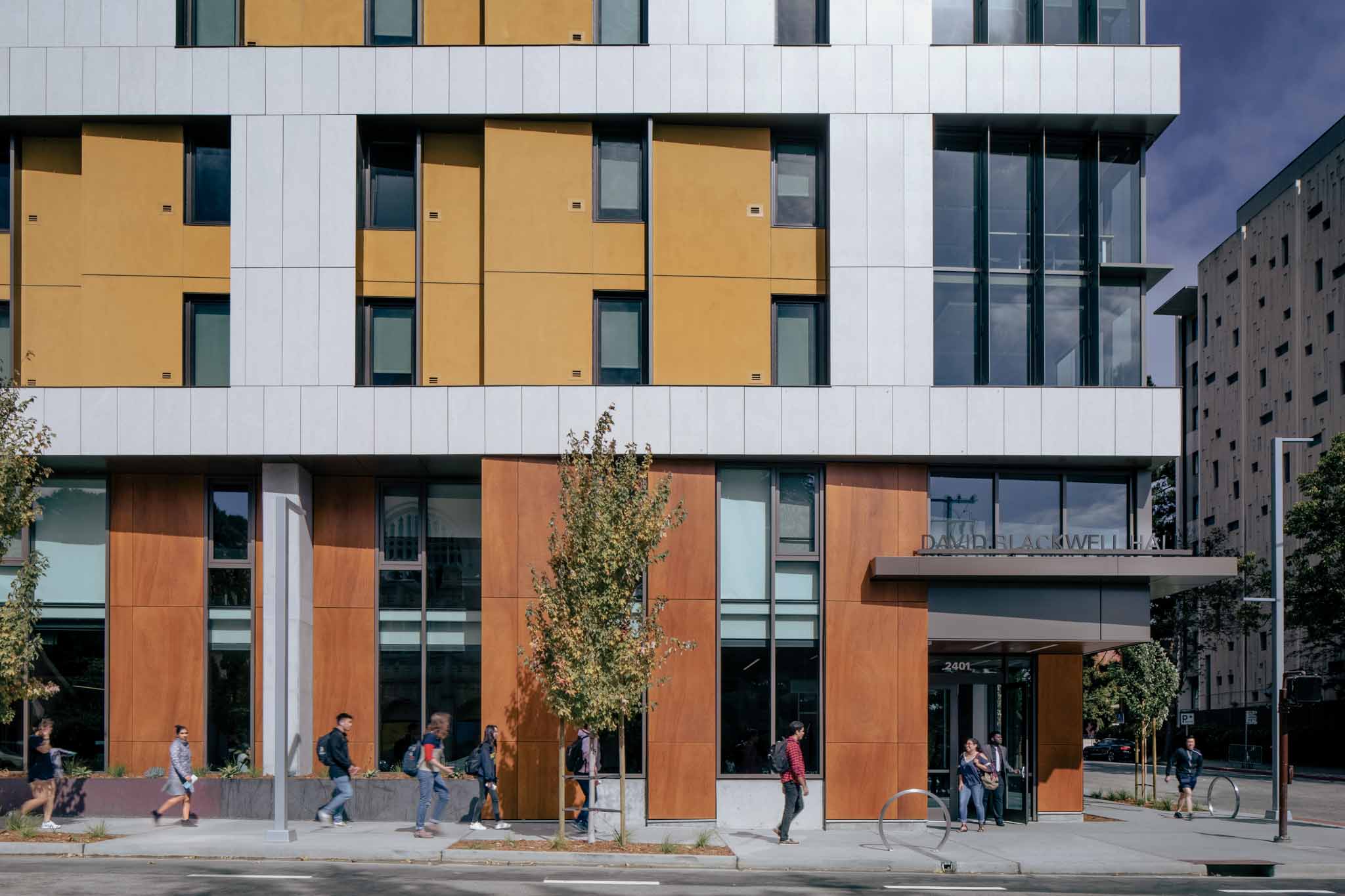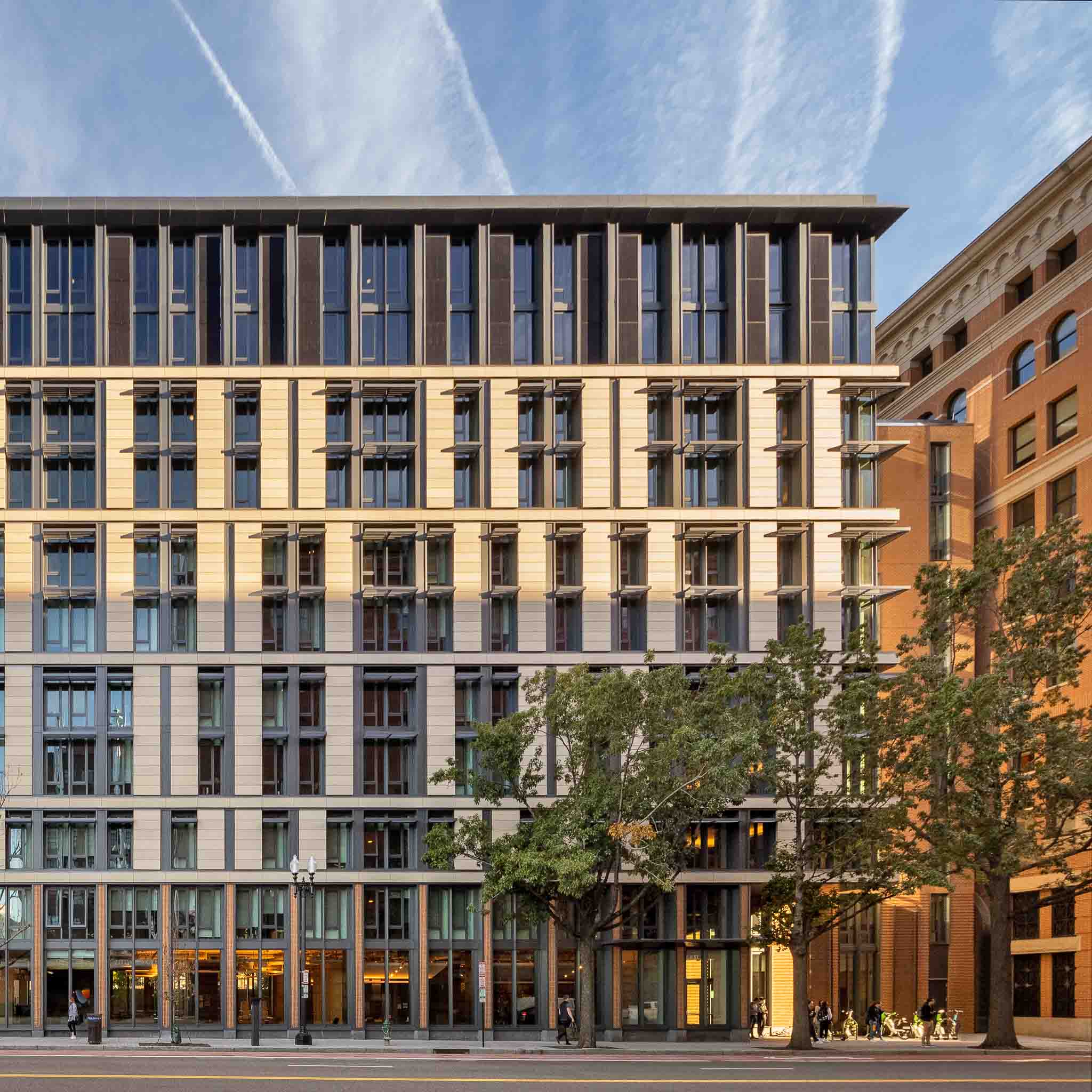Meadows Apartments
Meadows Apartments meets rigorous global energy efficiency standard, supports Princeton’s net zero goal
Colleges and universities have long been incubators of world-changing ideas and inventions. As more higher education institutions pursue ambitious carbon neutrality goals to mitigate the effects of climate change, they are pushing their ingenuity to new levels.
Princeton University has set a goal to reach net zero greenhouse gas emissions by 2046—its 300th anniversary. After partnering to develop two LEED-certified housing communities for graduate students and staff, Princeton and American Campus Communities have upped the ante with the new Meadows Apartments community, which is certified to both LEED Silver and the rigorous Passive House standard for energy efficiency. Meadows, which opened in April 2024, is the first Passive House-certified building for both organizations and one of the largest Passive House projects in the U.S.
The Passive House standard takes a holistic approach to design, exploring every possible factor that can reduce energy consumption. Passive House-certified buildings can use up to 90% less energy than a typical structure, which is why Princeton pursued the standard as a strategy for aggressively working toward net zero.
Sustainable Innovation in Action
Meadows has the capacity to house more than 600 graduate and post-doctoral students in its three-building community, which is located in the West Windsor Meadows Neighborhood (formerly Lake Campus), the University's new campus across Lake Carnegie. The buildings have highly efficient envelopes designed to take advantage of sun, shade and ventilation to “passively” keep residents comfortable and minimize the use of active heating and cooling systems. ACC worked with project architect Mithun to reduce the buildings’ roof and slab areas, which helps prevent heat gain in the summer and heat loss in the winter. All windows are triple-glazed to further prevent this gain and loss.
The building envelopes have minimal articulation, or corners and edges, as these types of joints make it more challenging to keep the building airtight. And the buildings were also designed to reduce entry and exit points while still remaining welcoming.
“We had to strike the right balance of making Meadows extremely efficient yet highly functional and appealing to residents,” said Addom Gentner, vice president of development at ACC. “Our top priority is always creating a place that supports students’ well-being and quality of life.”
An All-Electric Community
Meadows is an all-electric community, and the energy it uses for heating and cooling is thermal, sourced from Princeton’s 150 geo-exchange well bores located through the adjacent softball stadium.
In addition to meeting the university’s sustainability goals, Meadows was also designed to meet Princeton’s response to the University’s Housing Master Plan for cohesive, vibrant and sustainable housing for its graduate students and staff. Princeton and ACC first partnered together toward this plan in 2010 when Princeton chose ACC to develop the Lakeside Graduate Apartments for grad students and later the Merwick Stanworth community for faculty and staff..
Plans for the Future
ACC plans to pursue more energy efficiency certifications of its owned portfolio. We have developed an industry-leading 48 projects that are LEED certified or tracking LEED certification, including 22 projects that are certified LEED Platinum or Gold. We are currently tracking 11 registered LEED projects that are under construction.
“We share Princeton’s commitment to dramatically increasing energy efficiency and reducing GHG emissions,” said Jason Wills, ACC senior vice president of corporate responsibility and development. “Working on the Meadows project has inspired us to continue pushing the boundaries of sustainable innovation.”
To that end, in 2023 ACC introduced a new green certification policy to ensure our communities incorporate the most innovative ideas from the industry’s preeminent standards. All newly developed and acquired ACC communities must now meet Fitwel standards in their first year of operation. And new developments must pursue LEED, ENERGY STAR and/or Passive House certification.

Passive House Features:
- High-performance building systems
- Highly efficient building envelope
- Increased heat recovery ventilation
- Deep sunshading
- Triple-glazed windows
- Enhanced exterior insulation

Other Sustainable Features
- Buildings equipped with programs to support ongoing, campus-wide waste reduction efforts
- Low-flow fixtures will achieve a 40 percent reduction in potable water use compared to the LEED baseline
- Rooftops designed to support future photovoltaic infrastructure
- Geological exchange systems used for HVAC and domestic hot water
- Designed for an active pedestrian culture that encourages interaction with nature
- Landscaped with drought-resistant plant species and low-maintenance turf with bioswales, rain gardens and bio-retention strategies for stormwater management
- Green roofs on community center and retail areas to help mitigate storms
- Community garden for residents




